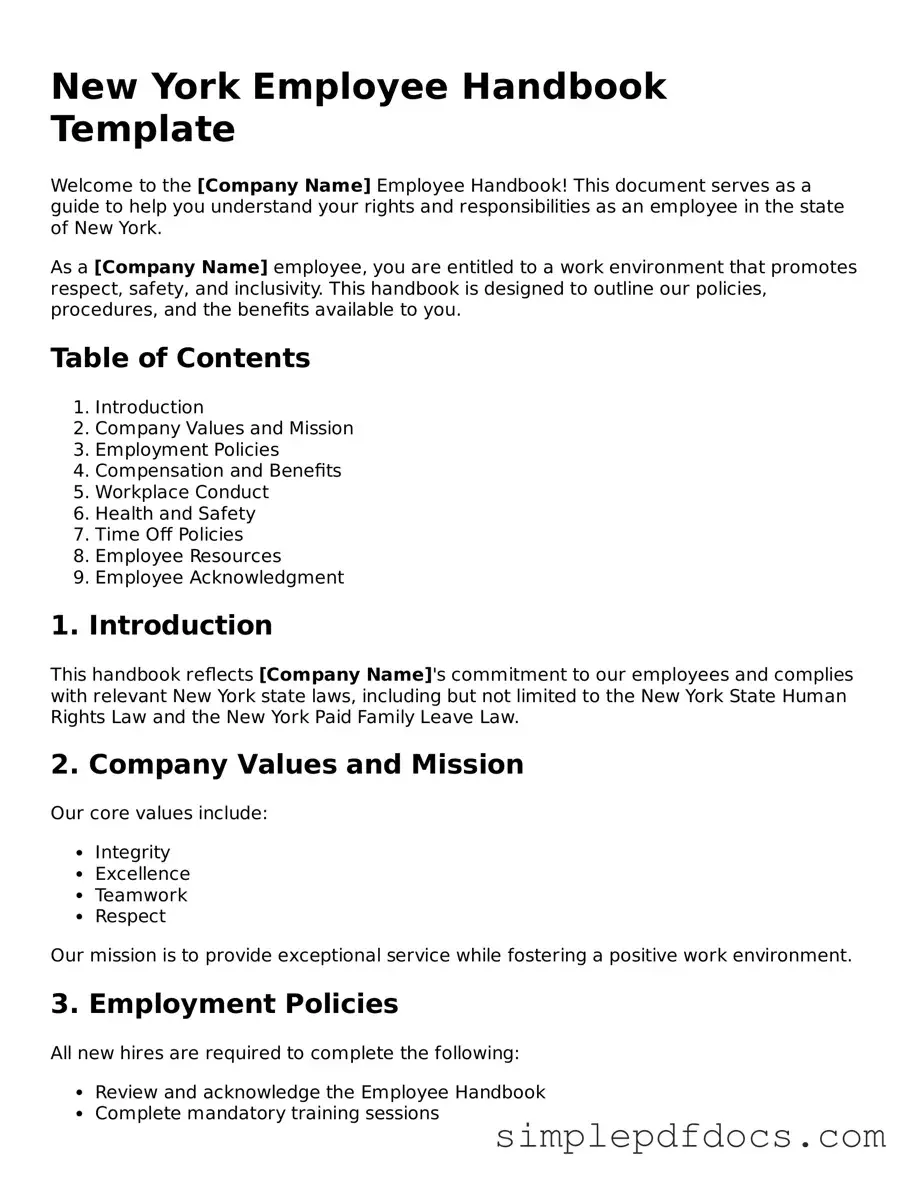Legal Employee Handbook Document for the State of New York
The New York Employee Handbook form serves as a crucial document that outlines the policies, procedures, and expectations within a workplace. This form not only helps to communicate essential information to employees but also plays a significant role in fostering a positive work environment. Understanding its components can aid both employers and employees in navigating their rights and responsibilities effectively.
Get Document Here
